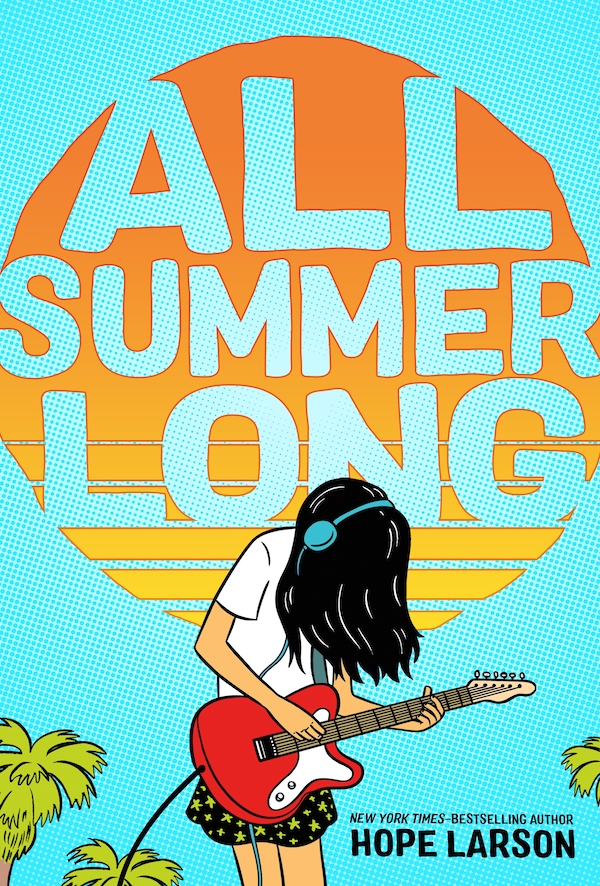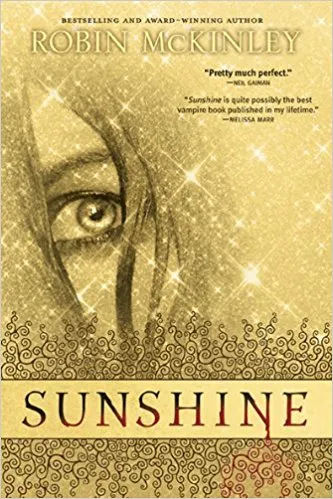
I Failed As A Webcomic Artist
This content contains affiliate links. When you buy through these links, we may earn an affiliate commission.
 Today’s Free Comic Book Day coverage is sponsored by All Summer Long by Hope Larson, published by First Second.
Thirteen-year-old Bina has a long summer ahead of her. She and her best friend, Austin, usually do everything together, but he’s off to soccer camp for a month, and he’s been acting kind of weird lately anyway. So it’s up to Bina to see how much fun she can have on her own. At first it’s a lot of guitar playing, boredom, and bad TV, but things look up when she finds an unlikely companion in Austin’s older sister, who enjoys music just as much as Bina. But then Austin comes home from camp, and he’s acting even weirder than when he left. How Bina and Austin rise above their growing pains and reestablish their friendship and respect for their differences makes for a touching and funny coming-of-age story.
Today’s Free Comic Book Day coverage is sponsored by All Summer Long by Hope Larson, published by First Second.
Thirteen-year-old Bina has a long summer ahead of her. She and her best friend, Austin, usually do everything together, but he’s off to soccer camp for a month, and he’s been acting kind of weird lately anyway. So it’s up to Bina to see how much fun she can have on her own. At first it’s a lot of guitar playing, boredom, and bad TV, but things look up when she finds an unlikely companion in Austin’s older sister, who enjoys music just as much as Bina. But then Austin comes home from camp, and he’s acting even weirder than when he left. How Bina and Austin rise above their growing pains and reestablish their friendship and respect for their differences makes for a touching and funny coming-of-age story.
Webcomics exist in the dozens. What can I say? We love to draw. The Internet allows for many artists to cut their teeth and find an audience. Some, like rufftoon and Faith Erin Hicks, build careers after years of drawing webcomics for dear readers. I wanted to make a webcomic when I was a kid. Rather, I wanted to submit my work to a syndicate and produce a daily newspaper strip. Bill Watterson’s story inspired me, as did Charles Schulz’s success with Charlie Brown. At the time, my career path seemed simple. After I sold a book for $100,000 dollars, I could photocopy comics and gain dozens of readers. The idea seemed simple enough. I would draw a fantasy webcomic, one with a lead that looked like me in terms of skin tone, if not in personality. There would be spells! Baking! Watercolor backgrounds because Bill Watterson mentioned drawing watercolors for his trade collections of Calvin and Hobbes. People would love the joy. The joy would sell, and selling would mean a syndicate. By then, however, newspaper comics slowly started to fade. Our local newspaper had a contest I didn’t enter, and the comic they chose only ran for a few weeks. Cartoonists mentioned lacking copyright over their creations. Syndicates turned down an awesome webcomic that used silent panels exclusively. I took it to heart that my siblings would patiently read the comics that I handed them, more like rough storyboards that were on sides of computer paper and then hastily written in using a mechanical pencil. Why would I need more complicated tools, especially since the only thing I had was a watercolor set that lasted me through the years? Why would I need to get Photoshop or a Rapidograph pen that would require filling? Such is the ego. It is true that an artist is only as good as their tools, but tools do not make a good or great artist. I have Bombay ink that is dark as night, a dozen brushes meant for painting and inking, and a few crow quill pens that I have entirely not mastered. No matter how I inked, the brushes would be too heavy. Brush pens and graphic pencil seemed to work the best, oddly enough. I would go with them and work steadily. College seemed promising. College had scanners, supportive art professors, and libraries. Plenty of libraries. One professor suggested as a semester project to take several of my best comics and wrap them into a book. It would look good for portfolios, she pointed out, and I could use it as independent study credit. I took the independent study class and an intro to electronic media, to learn more about the capabilities of Photoshop. My fingers preferred the tactile traditional artwork, since for some reason I couldn’t figure out why the Illustrator images wouldn’t come to life and make for stunning imagery. At the same time, I kept at it. I figured that persistence and a solid ego would make for a success story.
 It did, and it didn’t. One of my dear teachers bought an original watercolor; he and I have stayed in touch since he’s also a science fiction and fantasy fan. I created the book, sent it off to Pixar along with my portfolio, and decided to try and sell it online. No one wanted a collection of watercolors that were about an obscure, complicated fantasy world that existed inside a bakery. This wasn’t Robin McKinley’s Sunshine, the novel about a baker who used the sunlight to escape and fight vampires. This was my story, and no one wanted it.
In theory, I put all the right steps forward. I subscribed to a website that promised ongoing help for comic artists and writers. I followed artists and in turn asked them to follow me. I drew every day, both practice sketches and storyboards. Yet the figures remained stiff. The art never achieved the pathos that I saw in my head. I still kept at it. Surely, time would be a mercy.
Eventually, I had to put my webcomic on hiatus to complete business school. There wasn’t time to draw and to catch up on intense reading and homework. I found that out the hard way. So, I ended on a cliffhanger and promised to return. Somehow I would, drawing for the occasional business school project.
And yet. This is the worst part.
I have not returned. The website is still up, and I have the tools and the story playing out in my head, but I think I know that I failed. My few readers were beloved and dear, but I also knew that after a point you have to throw in the towel and admit that you weren’t as good as you thought you were. Bill Watterson had inspired me, but I hadn’t made anything as hilarious as the simplest Calvin and Hobbes strip.
If I were to return, I’d have to decide if I would start from scratch, continue the story as planned, or craft a whole new story. There would have to be less world-building. Or maybe there would be more.
It did, and it didn’t. One of my dear teachers bought an original watercolor; he and I have stayed in touch since he’s also a science fiction and fantasy fan. I created the book, sent it off to Pixar along with my portfolio, and decided to try and sell it online. No one wanted a collection of watercolors that were about an obscure, complicated fantasy world that existed inside a bakery. This wasn’t Robin McKinley’s Sunshine, the novel about a baker who used the sunlight to escape and fight vampires. This was my story, and no one wanted it.
In theory, I put all the right steps forward. I subscribed to a website that promised ongoing help for comic artists and writers. I followed artists and in turn asked them to follow me. I drew every day, both practice sketches and storyboards. Yet the figures remained stiff. The art never achieved the pathos that I saw in my head. I still kept at it. Surely, time would be a mercy.
Eventually, I had to put my webcomic on hiatus to complete business school. There wasn’t time to draw and to catch up on intense reading and homework. I found that out the hard way. So, I ended on a cliffhanger and promised to return. Somehow I would, drawing for the occasional business school project.
And yet. This is the worst part.
I have not returned. The website is still up, and I have the tools and the story playing out in my head, but I think I know that I failed. My few readers were beloved and dear, but I also knew that after a point you have to throw in the towel and admit that you weren’t as good as you thought you were. Bill Watterson had inspired me, but I hadn’t made anything as hilarious as the simplest Calvin and Hobbes strip.
If I were to return, I’d have to decide if I would start from scratch, continue the story as planned, or craft a whole new story. There would have to be less world-building. Or maybe there would be more.
Reality Check
I should have realized things would not go according to plan when the high school newspapers would rarely print my work. College newspapers didn’t even bother and the editors wouldn’t give straight answers. Once more, dozens of webcomics exist. The ones that stand out are either magnificent or unique. Hand-painting watercolors was not unique enough, if the art didn’t work. With that said, I believe everyone should try their hand at a webcomic if they have the tools and ideas. You don’t know what you can or can’t do unless you try. Even so, trying can hurt. Trying will hurt. People will try to nudge you in the right direction.Hindsight
They say that one learns more from failure than success. I still don’t know what I have or haven’t learned. But I do know it was a fun ride while it lasted. Plus, I made a few friends along the way and have continued to encourage them. Now I can promote other artists, and read their work. Maybe one day I’ll rejoin them. In the meantime, I have the memories.- 9 Comics for D&D, Tabletop RPG, and Fantasy Fans
- How To Support Webcomics Creators on Free Comic Book Day
- 5 Dos (and One Don’t) for Free Comic Book Day
- Guide to Free Comic Book Day
- How Spider-Woman Made Me Feel Better About Motherhood
- The Best Comics We Read in April 2018
- Upcoming Manga Releases of 2018
- The 20 Stages of Your Comic Book Obsession
- 10 Murder Mystery Comics











